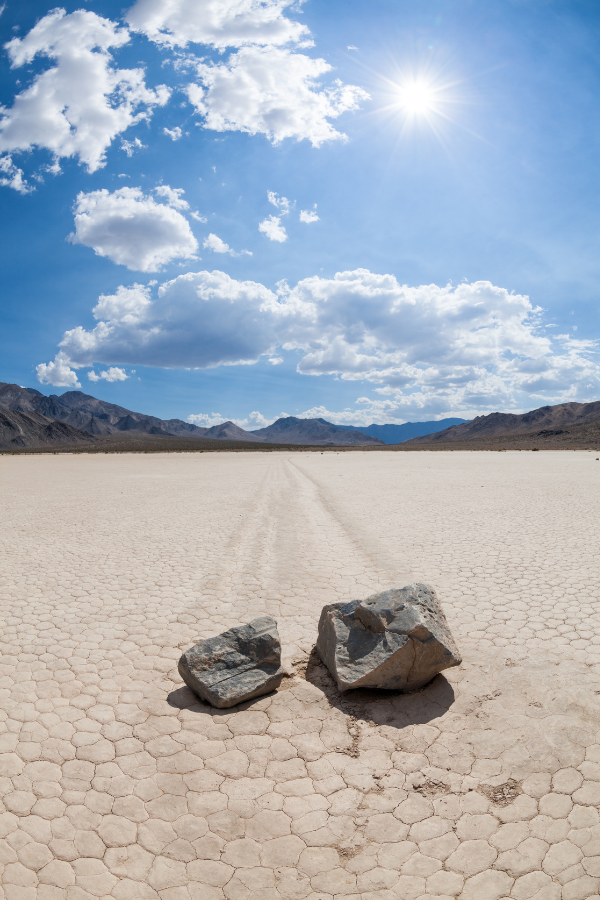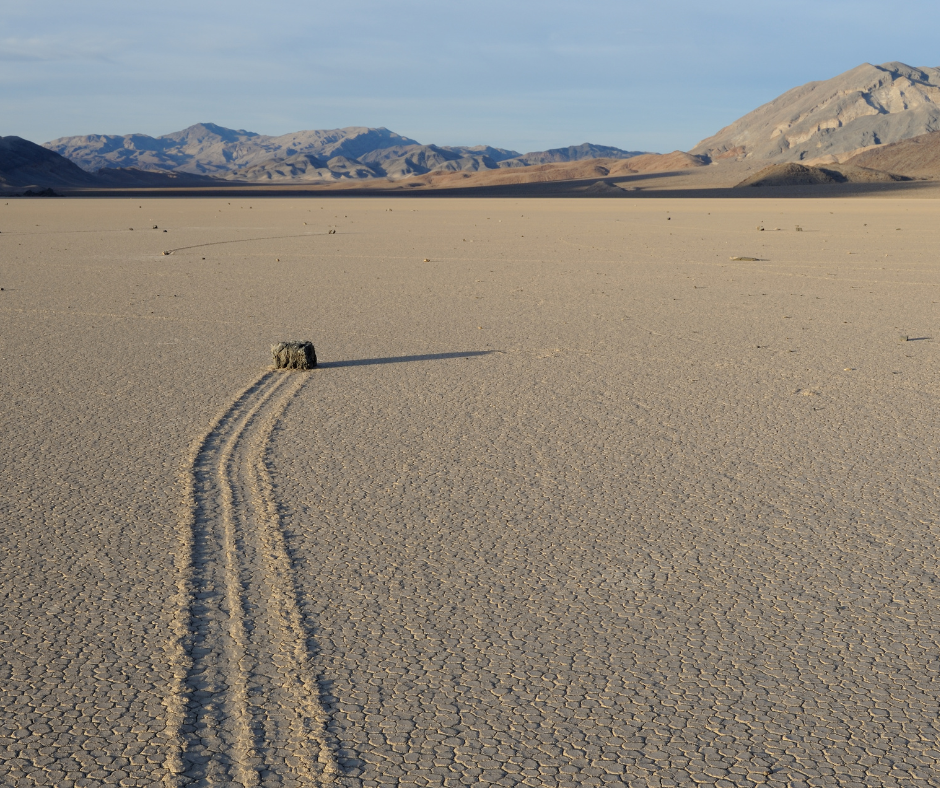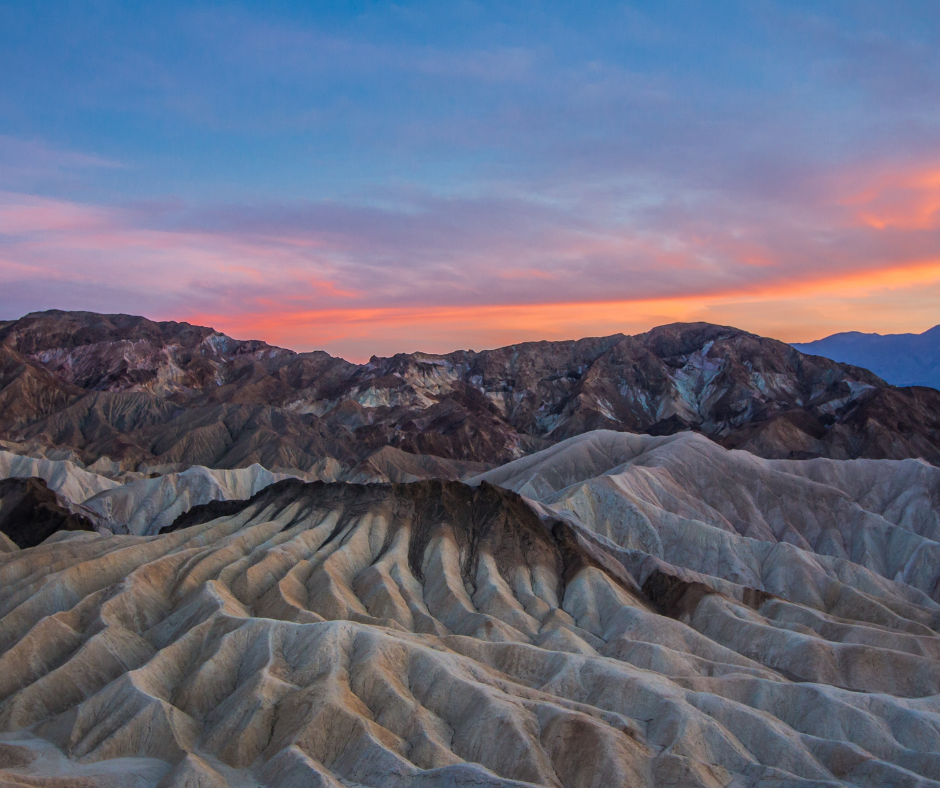

Unraveling the Secrets of Death Valley’s Sailing Stones
Summary
The sailing stones of Death Valley’s Racetrack Playa have puzzled observers for decades with their mysterious, self-propelled movements across the flat desert floor. Recent scientific studies using GPS and time-lapse photography have revealed that these stones move due to a rare combination of ice formation, light winds, and slick mud. While the main mechanism is now understood, variations in stone movement and similar phenomena in other parts of the world continue to intrigue scientists. Visiting Racetrack Playa offers a unique glimpse into this natural spectacle, though conservation efforts are vital to preserve its integrity. This phenomenon not only deepens our understanding of geological processes but also highlights the intricate interactions within Earth’s dynamic systems.
Reflection Questions
Journal Prompt
The sailing stones, also known as sliding rocks or moving rocks, are a natural phenomenon found on the flat, dry lake bed known as the Racetrack Playa in Death Valley National Park, California. These rocks, which can weigh up to several hundred pounds, mysteriously move across the sediment, leaving long, visible tracks behind them—sometimes as long as several hundred meters—without human or animal intervention. But how do the sailing stones of Death Valley move on their own? With dust devils whipping around them and atmospheric cloud banks hovering above, this rock movement is one of many mysteries in Death Valley. Learn all about the sailing stones Death Valley is famous for below.
Observing the Sliding Stones in Death Valley’s Racetrack Playa


Racetrack Playa is a strikingly flat and smooth, dry lake bed located in Death Valley National Park, California, renowned for its extreme temperatures and stark landscapes. Stretching approximately 2.8 miles long and 1.3 miles wide, this desert basin is framed by mountains and is almost perfectly level with only minor deviations in elevation.
The playa surface consists of silt and clay covered by a layer of misshapen dolomite and syenite rocks, which contribute to its characteristic cracked and dry mud textures. This unique environment, combined with the valley’s notorious heat during the day and the cold in the night, creates the rare conditions essential for the mysterious movement of the sailing stones.
Historical Observations and Initial Speculations About the Rock Movements


The sailing stones of Racetrack Playa were first documented in the early 20th century, with formal observations noting the rocks’ inexplicable trails as early as the 1940s. Observers were baffled by the sight of heavy stones apparently moving across the dry lake bed, leaving long, continuous tracks behind them without any human or animal intervention. Early speculations ranged from strong gusts and light winds to thick ice floating rocks past the playa to magnetic fields and supernatural forces, as people grappled with how these heavy objects could traverse the desert floor on their own.
Before the definitive 2014 study, several theories and smaller experiments attempted to demystify the sailing stones. Scientists proposed that a combination of strong winds (capable of reaching speeds up to 90 mph), water slicks, and the formation of large ice sheets could facilitate the rocks’ movement. Experiments included tracking positions of all the rocks over time and measuring wind speeds and directions at the playa. Researchers even attempted to replicate the stone movements under controlled conditions, but results remained inconclusive, leaving room for ongoing debate and further investigation into this peculiar natural occurrence.
Recent Scientific Investigation Into the Rocks’ Mysterious Movement


Scientific interest in the sailing stones began to peak in the late 20th century, with systematic observations and studies ramping up from the 1970s onward. Researchers conducted long-term monitoring projects that involved taking periodic photographs, placing stakes around rocks, and even embedding magnets in some stones to measure movement and orientation. However, a true breakthrough in understanding came in the 1990s and 2000s when technology allowed for more precise measurement and data collection, culminating in the highly pivotal studies of the 2010s that finally shed light on this enduring mystery.
The most significant advancement in understanding the movement of the sailing stones came in 2014, when a team of researchers equipped with GPS trackers and time-lapse cameras set up a comprehensive experiment on the playa. By attaching GPS devices to various stones and setting cameras to capture their movement at regular intervals, the researchers were able to observe that the rocks moved in conjunction with the formation of thin sheets of ice around them. This setup not only provided visual proof of how the stones moved but also recorded the precise trajectories and speeds, conclusively linking their travel to specific environmental conditions.
The Sailing Stones of Death Valley Explained


For the sailing stones to move, a rare combination of natural conditions must converge. First, the playa must be filled with enough water to form a shallow pool (even only a few inches deep) that can freeze overnight. The resulting thin sheets of ice must then partially encase the stones just below the frozen pond surface.
As temperatures rise and the ice begins to melt under the morning sun, it becomes fragile and breaks into large floating sheets. If the mud beneath the ice is sufficiently slick and the wind is strong enough (yet not too strong), these ice sheets can glide across the playa floor, slowly pushing the stones embedded in them. This motion creates the long, distinct tracks left behind on the muddy surface, flanked by surrounding mountains. Scientists observed these trails after the ice breakup happened and the water evaporated.
Continuing Mysteries and Questions


Despite significant advancements in understanding the movement of the sailing stones, numerous questions remain. The exact conditions and frequency of stone movements are still not fully predictable, and variations in stone size and shape may influence movement in ways not yet fully quantified. Additionally, while the 2014 findings offered a robust model for how stones move, they do not explain why some tracks are straight while others curve or why stones start or stop moving at specific times.
Possible Explanations for Variations in Stone Movement


The movement of the sailing stones might also vary under different environmental conditions than those typically observed. Changes in climate, such as variations in temperature patterns, frequency, and intensity of ice formation, or even the amount and consistency of rainfall, could potentially alter the way stones move. Such variations could provide more insights into the delicate interplay of factors necessary for this phenomenon to occur.
Fuel your creative fire & be a part of a supportive community that values how you love to live.
subscribe to our newsletter
Other Occurrances Across the World
While the sailing stones of Death Valley are the most famous, similar phenomena have been observed in other parts of the world, including Little Bonnie Claire Playa in Nevada and Lake Natron in Tanzania. These instances involve rocks and similar environmental conditions but often differ in geological settings or climatic conditions, suggesting that such rare moving stone phenomena might be more widespread and varied than previously thought.
Final Thoughts on the Sailing Stones of Racetrack Playa


The sailing stones have captivated the imaginations of both scientists and the public, symbolizing the intriguing blend of natural mystery and scientific inquiry. Their study has significantly impacted our understanding of geological processes and environmental interactivity, making them a valuable subject in both academic and popular realms.
Ultimately, the sailing stones embody a captivating mix of mystery, science, and the profound beauty of natural wonders. They remind us of the continuous pursuit of understanding the unknown and the joy of discovering how even the most ordinary elements of the earth can engage in extraordinary behaviors. This enduring curiosity ensures that the sailing stones will continue to inspire and challenge our understanding of the natural world.
Witnessing the sailing stones in person can be a surreal and inspiring experience, offering a unique connection to the natural world’s mysteries. Observing these seemingly animate rocks provides a profound sense of the larger forces at work in nature and the delicate balance that governs even the most arid and lifeless environments.
We encourage you to visit the Playa and share your photos of the sailing stones with us here at DesignDash.










